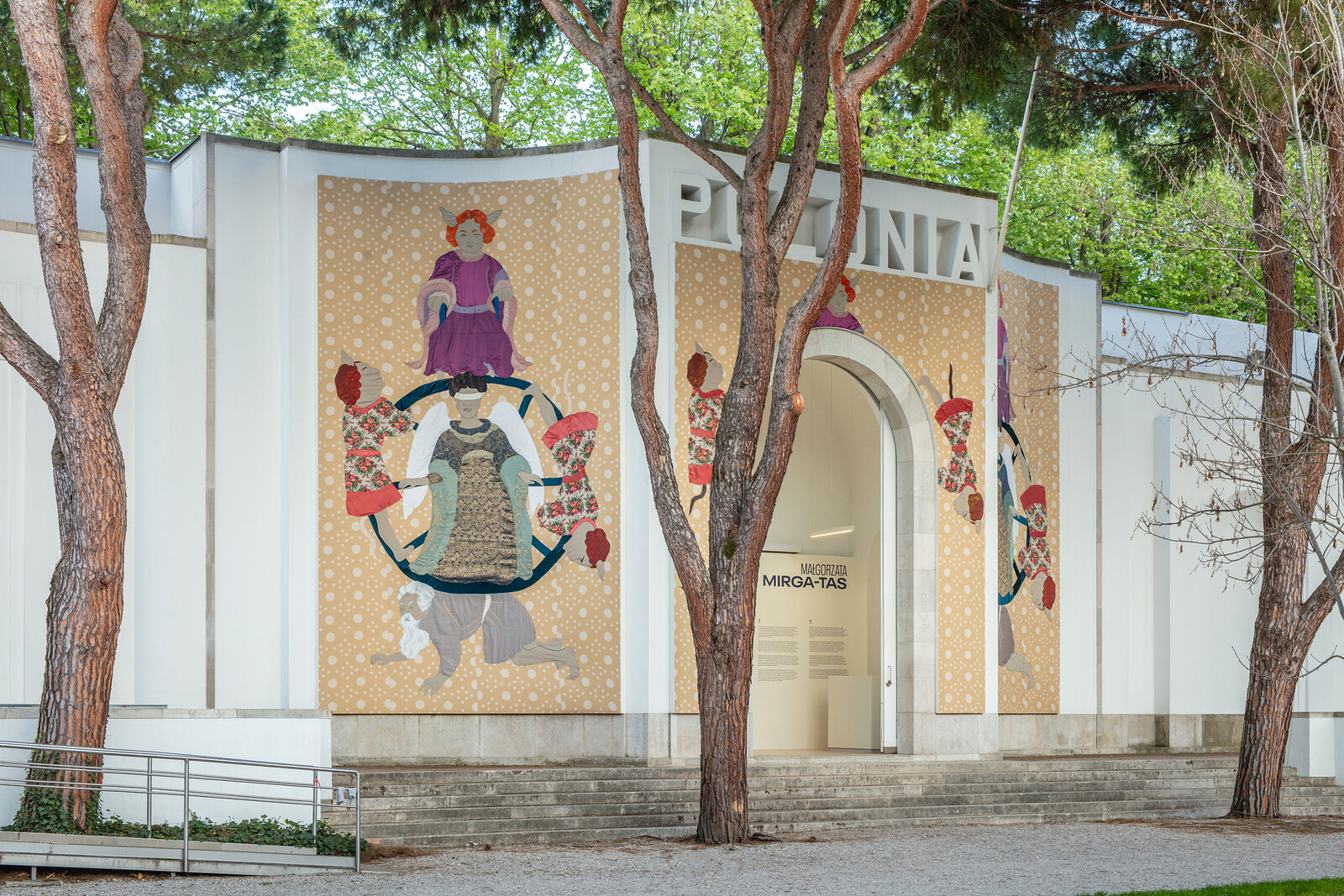Re-enchanting the World
April 23–November 27, 2022
Giardini della Biennale
Sestiere Castello
30122 Venice
Italy
For the first time in the over-120-year history of the Venice Biennale, a Roma artist is representing a national pavilion. The project Re-enchanting the World by Małgorzata Mirga-Tas, prepared specifically for the Polish Pavilion at the Venice Biennale 2022, is an attempt to find the place of the Roma community in European art history. The exhibition proposed by Wojciech Szymański and Joanna Warsza was the winner of a competition organised by Zachęta—National Gallery of Art.
As stated by the exhibition curators: Re-enchanting the World is Małgorzata Mirga-Tas’s manifesto on Roma identity and art, drawing inspiration from the astrological frescos of the Palazzo Schifanoia in Ferrara. You are about to enter a ”picture palace,” an installation of 12 large-format textiles, corresponding to the months of the calendar, which expands the history of art with representations of the culture of the Roma, the largest European minority.
Palazzo Schifanoia is the place which gave rise to art historian Aby Warburg’s concept of Nachleben, the life-after-life of images. The zodiac signs, the decan system, allegories of months, cyclicity and the migration of symbols across time and continents—between India, Persia, Asia Minor, ancient Greece, Egypt and Europe—become visual and ideological points of reference for Małgorzata Mirga-Tas, who inscribes them in a specific Polish-Roma vernacular historical experience.
The upper band depicts the story of the mythical journey of the Roma to Europe, based on a series of 17th-century prints by the Lorraine engraver Jacques Callot, which the artist decolonises. The middle band is an affective archive of Roma herstories, combining images of real women with magic and astrology. The lower band depicts everyday life in the artist’s hometown, Czarna Góra, and in other Roma settlements in Podhale and Spiš in the Tatra mountains.
The title is inspired by Silvia Federici’s book Re-enchanting the World: Feminism and the Politics of the Commons (2018). Its author posits recovering the idea of community and rebuilding relationships with others, including non-human actors: animals, plants, water or mountains. This non-violent process, in which women play an important role, reverses the world’s current dire fate, shaking off the evil spell that has been cast upon it.
The exhibition is accompanied by a catalogue edited by Wojciech Szymański and Joanna Warsza, which, in addition to the curators’ texts includes essays by specially invited writers (Ali Smith, Damian Le Bas, scholar Ethel Brooks), and poems by Teresa Mirga and Jan Mirga. The catalogue is co-published by Archive Books and ERIAC, and can be also downloaded as a pdf file for free here.
Curators: Wojciech Szymański and Joanna Warsza
Organiser: Zachęta—National Gallery of Art
Polish Pavilion commissioner: Janusz Janowski (from 2022), Hanna Wróblewska (till end of 2021)
Polish Pavilion office: Ewa Mielczarek, Joanna Waśko (deputy commissioner)
More about the exhibition here.
Download press materials here.
Download press photos here.
Polish participation at the 59th International Venice Biennale was made possible through the financial support of the Ministry of Culture and National Heritage of the Republic of Poland.
Exhibition partners: Adam Mickiewicz Institute, European Roma Institute for Arts and Culture (ERIAC)
Publication supported by the DAAD Artists-in-Berlin Program
Collaboration: Polish Institute in Rome
Media patronage: Vogue Poland
Media contacts
Joanna Andruszko, communications department, Zachęta—National Gallery of Art: j.andruszko [at] zacheta.art.pl / T +48 693 974 686
Joanna Waśko, Polish Pavilion office, Zachęta—National Gallery of Art: j.wasko [at] zacheta.art.pl

